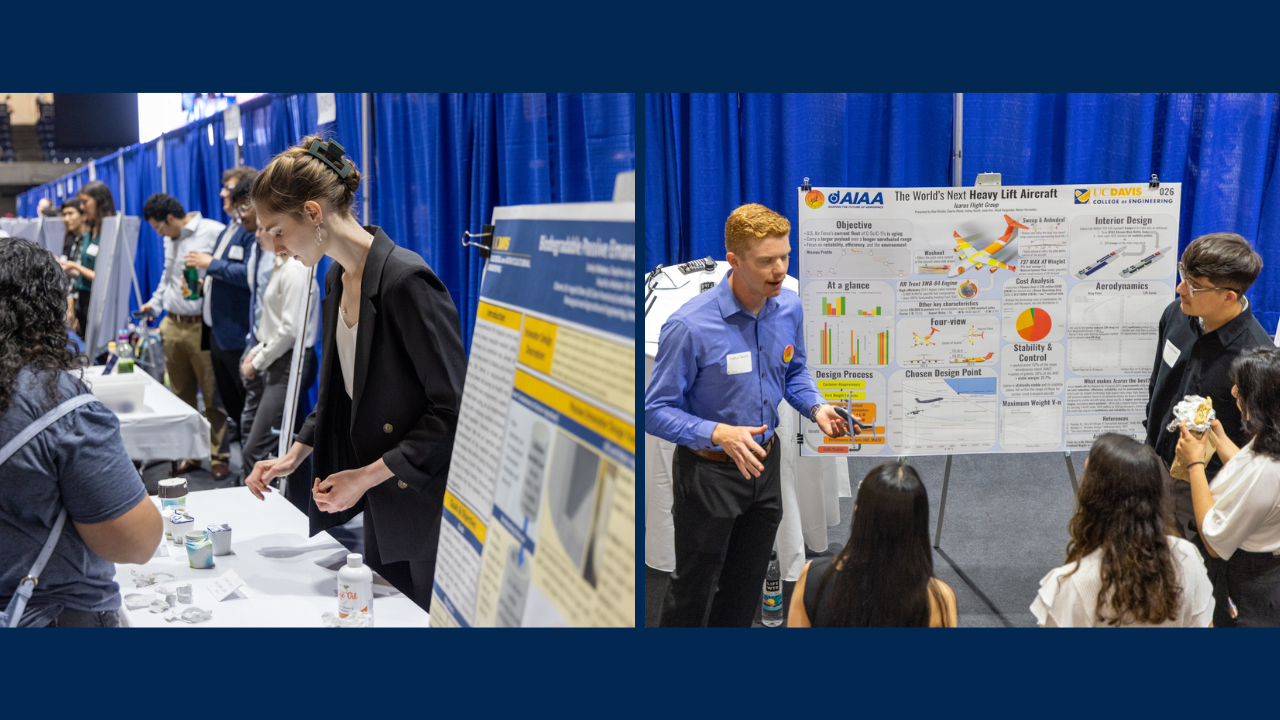
Sandia National Laboratories Honors Two Student Teams with Engineering Design Award
Two teams of senior engineering students at the University of California, Davis, received the 2024 Sandia Engineering Design Award from Sandia National Laboratories for their senior design projects: an accessible mosquito repellant device and an updated heavy-lift military aircraft.
The award celebrates outstanding projects that support Sandia National Laboratories' national security mission or one of the National Academy of Engineering's 14 Grand Challenges of Engineering, which range from enhancing virtual reality to advancing personalized learning.

A panel of judges from Sandia National Laboratories selected the winning designs from a pool of four finalists during the 2024 Engineering Design Showcase, held at the UC Davis University Credit Union Center on June 6.
"We are impressed with the variety of projects and represented majors in the UC Davis engineering design projects submitted to our competition," said Eric Martin, the design award lead for Sandia National Laboratories. "It is increasingly evident that these projects showcase exceptional communication skills and a strong application of engineering design principles, aligning with our expectations for entry-level candidates at Sandia National Laboratories."
A trio of biological systems engineering majors took the top prize and $1,000 with their device: a passive emanator for mosquito control. Graduating seniors Morgan Johnson, Daphne Lee and Emily Michaela Makeev set out to develop a device that releases mosquito repellant for use in rural areas with outbreaks of vector-borne diseases like malaria.
The team took the limited resources in those areas into account and designed a device that has an outer water-impermeable casing, an inner oil-impermeable casing and a container made of cellulose acetate — a bioplastic — that can hold the mosquito repellant. The release rate is adjustable to maintain safety, and the cellulose acetate container can be refilled or replaced without damaging the other two components.
Mechanical and aerospace engineering majors took the second prize and $300 for their analysis and redesign of heavy-lift aircraft used by the United States Air Force.

The goal of the team, which comprised Joshua Booth, Mitali Rangnekar, Alan Mireles, Nelson Hernandez, Jinoh Kim and Gaurav Dhirar, was to create a new active cargo aircraft that can carry at least 430,000 pounds and can travel over 5,000 nautical miles. Called "Icarus," the aircraft is an updated version of the Lockheed C-5M, a heavy-lift aircraft already in use. With its larger size and increased lift thanks to four Rolls Royce Trent XWB-84 turbofan engines — an industry-leading engine with 84,000-pound thrust capability, reduced CO2 emissions and extended flight range — Icarus meets the new requirements of a growing military, allowing for more resources to be carried longer distances without refueling, which is essential for emergency missions.
For the Sandia National Laboratories engineers, the two teams' projects truly stood out, illustrating the exceptional caliber of Aggie engineers graduating each year.
"The finalist teams demonstrated remarkable teamwork and effectively communicated their technical achievements while adhering to competition guidelines," said Martin. "We continue to see many outstanding examples of potential future Sandians at the design showcase."




